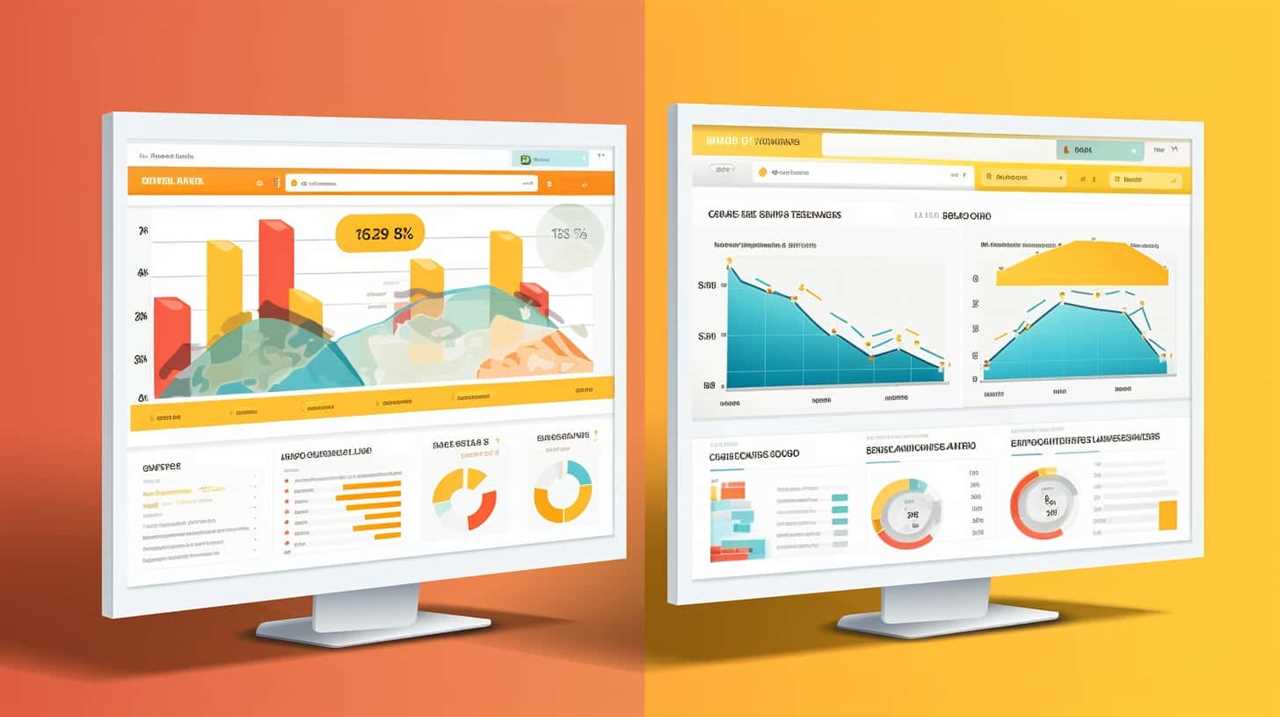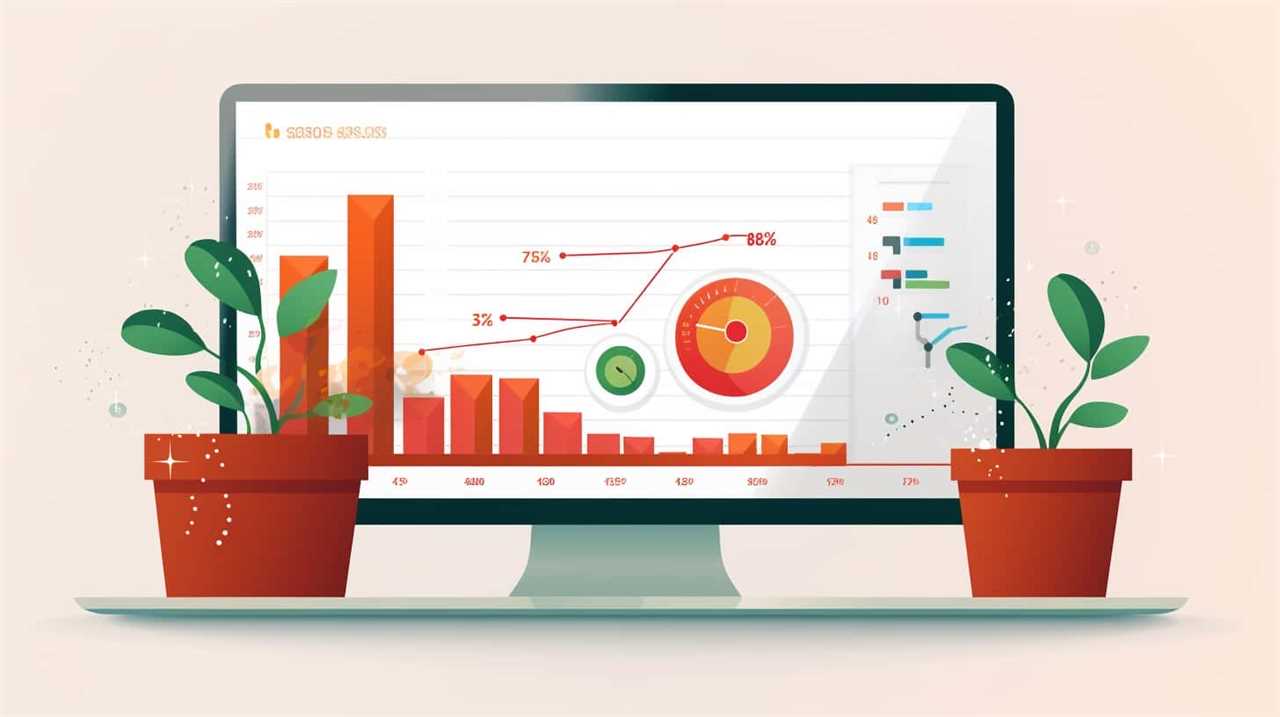Keyword Research
Unlocking Creativity: Does SEO Work for Artists?

Are you an imaginative person aiming to amplify your online visibility and attract a wider viewership? If so, you’re in the right place! This article explores how SEO (search engine optimization) can benefit artists. By implementing effective SEO strategies, you can boost your website’s search engine rankings, increase organic traffic, and grow your online presence.
SEO may seem daunting, but it’s an essential tool that can help you stand out in the digital realm. So, let’s dive in and discover how SEO can unlock your creativity and take your artistry to new heights!
Key Takeaways:
- SEO can greatly benefit artists by enhancing their online visibility and attracting a wider audience.
- Implementing effective SEO strategies can improve a website’s ranking on search engine results pages and increase organic traffic.
- SEO is a cost-effective way for artists to enhance their online presence and make their brand more professional.
- Artists can use SEO techniques on various platforms, including social media, websites, and blogs, to optimize their visibility.
- While SEO results may take time, staying consistent and implementing SEO strategies can lead to long-term success.
What Is SEO?
SEO, which stands for search engine optimization, is a fundamental aspect of improving online visibility and reaching a wider audience. It involves optimizing a website’s content, structure, and assets to rank higher on search engine results pages (SERPs). By implementing effective SEO strategies, artists can ensure that their website and content are easily discovered by search engines, leading to increased visibility and organic traffic.
So how does SEO work? Search engines like Google use complex algorithms to analyze websites and determine their relevance to user search queries. SEO involves optimizing various elements of a website, such as on-page content, metadata, and backlinks, to align with these algorithms. Through keyword research, artist websites can be optimized with relevant and highly searched terms, making them more likely to appear in search results when users look for content related to their artistic niche.
Optimizing content for search engines is crucial for artists as it directly impacts their online visibility. By understanding the importance of SEO and implementing effective strategies, artists can improve their chances of reaching their target audience, gaining exposure, and ultimately growing their artistic brand.
| SEO Strategies | Benefits |
|---|---|
| Keyword Research | Identify popular search terms |
| On-Page Optimization | Improve website visibility |
| Backlink Building | Enhance website authority |
| Content Optimization | Rank higher in search results |
SEO is essential for artists looking to enhance their online visibility and reach a wider audience. By implementing effective SEO strategies, artists can improve their website’s ranking on search engine results pages (SERPs), attract more organic traffic, and increase their online presence.
Importance of SEO for Online Visibility
Optimizing content for search engines is crucial for artists as it directly impacts their online visibility. By understanding the importance of SEO and implementing effective strategies, artists can improve their chances of reaching their target audience, gaining exposure, and ultimately growing their artistic brand.
- SEO helps artists stand out in the highly competitive online space.
- It increases the likelihood of being discovered by potential fans, clients, or customers.
- Improved visibility leads to increased organic traffic to an artist’s website or online portfolio.
- Enhanced online presence can result in more opportunities, such as collaborations or sales.
Who Can Benefit from SEO for Artists?
SEO is not just for businesses or corporations. It is a powerful tool that can benefit artists of all kinds. Whether you are a creative blogger, artist, musician, DIY crafter, author, writer, or anyone who identifies as a creative, implementing SEO strategies can help you enhance your online presence and reach a wider audience.
Creative bloggers can leverage SEO to rank their articles higher in search results, attracting more readers to their unique content. Artists can use SEO to showcase their artwork to a larger audience, increasing their chances of sales and recognition. Musicians can benefit from SEO by gaining more listeners and opening up brand opportunities. DIY crafters can optimize their product descriptions to increase visibility and attract customers. Authors and writers can improve their visibility and reach more readers by utilizing SEO techniques in their online platforms.
Regardless of your creative pursuit, SEO offers a valuable opportunity to boost your visibility in the digital realm. It allows you to showcase your work to a wider audience, connect with like-minded individuals, and build a strong online presence.
Table: SEO Benefits for Artists
| Benefits | Description |
|---|---|
| Increased Visibility | SEO can help artists reach a larger audience and increase their online visibility. |
| Improved Sales | By optimizing their online platforms, artists can attract more customers and increase sales. |
| Expanded Reach | SEO allows artists to connect with a wider audience and gain recognition beyond their local community. |
| Enhanced Branding | By implementing effective SEO strategies, artists can establish a strong brand presence and stand out in their niche or genre. |
| Increased Opportunities | SEO can open up new opportunities for collaborations, partnerships, and brand sponsorships. |
| Better Online Presence | Through SEO, artists can ensure that their online platforms reflect their unique artistic voice and vision. |
The Benefits of SEO for Artists
Implementing an SEO strategy has numerous benefits for artists. It can generate free organic traffic to their website, ensuring ongoing results and long-term growth. SEO can also improve brand visibility and make artists appear more professional. By optimizing their website and content, artists can stand out in their niche or genre and gain a competitive edge. One of the best parts about SEO is that it is free, making it a cost-effective way for artists to enhance their online presence.
By implementing effective SEO strategies, artists can unlock the following benefits:
- Free Organic Traffic: SEO enables artists to attract organic traffic to their website, meaning more potential fans and customers.
- Ongoing Results: With a well-executed SEO strategy, artists can enjoy continuous visibility and traffic, even long after the initial optimization efforts.
- Better Brand Visibility: SEO helps artists increase their online visibility, making it easier for their target audience to discover their work and engage with their brand.
- Look More Professional: A website and online presence that is optimized for search engines creates a professional impression, building trust and credibility with visitors.
- Stand Out in Your Niche: By targeting specific keywords and optimizing their content, artists can differentiate themselves from competitors and carve out a unique space in their niche.
- It’s Free: SEO doesn’t require a financial investment, making it an accessible strategy for artists with limited budgets.
With these benefits in mind, it’s clear that implementing SEO techniques can significantly enhance an artist’s online presence, attract more visitors, and ultimately contribute to their success in the digital realm.
Table: Comparing the Benefits of SEO for Artists
| Benefits | Description |
|---|---|
| Free Organic Traffic | Attracting website visitors without paid advertising |
| Ongoing Results | Visibility and traffic beyond initial optimization efforts |
| Better Brand Visibility | Increased online presence and discoverability |
| Look More Professional | Building trust and credibility with a well-optimized website |
| Stand Out in Your Niche | Differentiating from competitors and establishing a unique presence |
| It’s Free | No financial investment required |
Where Can Artists Use SEO?
As artists, we have a plethora of online platforms and channels where we can harness the power of SEO to optimize our visibility and attract a wider audience. Let’s explore some of the key areas where we can implement SEO strategies to enhance our online presence:
- SEO for Social Media: Social media platforms like Instagram, Twitter, and TikTok are fantastic places to showcase our artistic talents. By incorporating relevant keywords into our bios, image alt texts, post descriptions, and hashtags, we can increase our visibility and attract more followers.
- SEO for Etsy: If you sell your artwork or crafts on Etsy, optimizing your product titles and descriptions with keywords can help potential buyers discover your creations more easily.
- SEO for Music/Art Projects: Whether you’re a musician or working on an art project, optimizing your content with relevant keywords can boost your visibility on platforms like YouTube, attracting more viewers and potential fans.
- SEO for Artist Website/Portfolio: Your artist website or portfolio is a prime platform to implement SEO techniques. By optimizing your website structure, using relevant keywords in page titles, meta descriptions, and header tags, you can improve your website’s search engine rankings.
- SEO for Blog: If you have a blog where you share your artistic journey or provide insights into your creative process, incorporating SEO strategies into your blog posts can help attract organic traffic and engage with a wider audience.
These are just a few examples of where artists can use SEO to optimize their online presence. By strategically implementing SEO techniques across various platforms and channels, we can increase our visibility, reach a larger audience, and ultimately elevate our artistic brand in the digital realm.
Best Practices for SEO on Social Media
When it comes to using SEO on social media platforms, here are a few best practices to keep in mind:
- Research relevant keywords and incorporate them into your social media bios, image alt texts, post descriptions, and hashtags.
- Create engaging and visually appealing content that aligns with your artistic brand.
- Regularly engage with your audience by responding to comments, messages, and mentions.
- Use analytics tools to track the performance of your posts and make data-driven decisions to improve your social media presence.
- Stay up to date with the latest trends and algorithm changes on each platform to adapt your SEO strategies accordingly.
By following these best practices, we can optimize our social media presence and effectively use SEO to expand our reach and connect with art enthusiasts around the world.

Table: Comparison of SEO Techniques for Different Platforms
| Platform | Optimization Techniques |
|---|---|
| Social Media (Instagram, Twitter, TikTok) | Incorporate relevant keywords into bios, image alt texts, post descriptions, and hashtags. |
| Etsy | Optimize product titles and descriptions with relevant keywords. |
| Music/Art Projects | Optimize content descriptions, titles, and tags with relevant keywords on platforms like YouTube. |
| Artist Website/Portfolio | Optimize website structure, page titles, meta descriptions, and header tags with relevant keywords. |
| Blog | Incorporate relevant keywords into blog post titles, headings, and content to improve search engine visibility. |
By utilizing these SEO techniques across different platforms, artists can maximize their online presence, attract a broader audience, and establish their artistic brand in the digital landscape.
When Will Artists See SEO Results?
As artists venture into the world of SEO, one burning question often arises: How long does SEO take to work? The answer, unfortunately, is not set in stone. Numerous factors affect SEO results, making it difficult to pinpoint an exact timeline. However, on average, artists can expect to start seeing significant results within 3 to 6 months of implementing SEO strategies. In some cases, it may take even longer, up to 12+ months, depending on various factors such as the platform being optimized for, keyword research strategy, competition, and website domain authority.
It’s important for artists to understand that SEO is a long-term game that requires patience and consistency. Rome wasn’t built in a day, and neither is a successful SEO strategy. Artists should stay committed to implementing SEO techniques, creating high-quality content, and optimizing their websites to achieve the desired results.
Factors that can affect the speed of SEO results include the level of competition for keywords in your industry, the quality of your keywords and content, and the overall optimization techniques applied. To expedite the process, artists can focus on providing valuable content, regularly updating their website, and actively engaging with their audience through social media and other channels. By continuously striving to improve their SEO strategy, artists can enhance their online presence and reach a wider audience.
| Factors Affecting SEO Results | Average Time for SEO Results |
|---|---|
| Competition for keywords | 3-12+ months |
| Keyword research strategy | 3-12+ months |
| Content quality | 3-6 months |
| Optimization techniques | 3-6 months |
| Website domain authority | 3-12+ months |

Understanding the Average Time for SEO Results
While it’s important to note that the average time for SEO results can vary, the key takeaway for artists is that patience and persistence are paramount. Building a strong online presence through SEO takes time, effort, and continuous learning. By consistently implementing proven SEO strategies, artists can increase their visibility, attract a wider audience, and ultimately achieve success in the digital realm.
How to Do SEO for Artists
Implementing effective SEO strategies is essential for artists to optimize their online presence and reach a wider audience. The SEO process for artists involves several key steps, including brainstorming and discovery, keyword research, analyzing competition, organizing ideas and keywords, and implementing SEO techniques. By following these steps, artists can enhance their visibility and attract more organic traffic to their website and digital platforms.
Brainstorming and Discovery
The first step in the SEO process for artists is to brainstorm and discover the main niche or focus of their artistic brand. This involves identifying the unique selling points of the artist’s work, understanding their target audience, and determining the keywords and phrases that best represent their art. It’s important to think creatively and explore different angles to stand out in the competitive landscape.
Keyword Research
Keyword research is a critical aspect of SEO for artists. By using tools like Google Keyword Planner or LowFruits, artists can identify relevant keywords and phrases that their target audience is likely to search for. This research helps artists understand the search volume, competition level, and potential opportunities for their chosen keywords. Selecting the right keywords will enable artists to optimize their website and content effectively.
Analyzing Competition and Organizing Ideas
Artists should analyze the competition for their chosen keywords to gain insights and understand the strategies used by other artists or art-related websites. This analysis helps artists identify gaps and opportunities in the market, allowing them to position their artistic brand uniquely. Additionally, artists should organize their ideas and keywords in a document or spreadsheet, ensuring easy reference and tracking throughout the SEO implementation process.
Implementing SEO Techniques
Once artists have brainstormed, conducted keyword research, and analyzed the competition, the next step is to implement SEO techniques. This includes creating high-quality and engaging content that incorporates the chosen keywords naturally. Artists should optimize metadata elements, such as title tags and meta descriptions, to provide search engines and users with relevant information about their artwork. Additionally, artists can optimize their website structure, use header tags and image alt text, and optimize their social media profiles to improve their online visibility and attract more organic traffic.
Implementing these SEO techniques will enhance artists’ online presence, increase their visibility to a wider audience, and ultimately help them achieve their goals in the digital realm.
| SEO Process for Artists | Steps |
|---|---|
| 1 | Brainstorming and Discovery |
| 2 | Keyword Research |
| 3 | Analyzing Competition and Organizing Ideas |
| 4 | Implementing SEO Techniques |
On-Page Optimization for Artists
In order to maximize the visibility and impact of your artist website, it is essential to focus on on-page optimization. This involves several key elements that will help improve your website’s performance in search engine rankings and attract more organic traffic.
Optimizing Website Structure
One of the first steps in on-page optimization is to ensure that your website has a clear and user-friendly structure. This includes organizing your content into logical categories, creating easily navigable menus, and implementing a mobile-friendly design. By providing a seamless and intuitive browsing experience, you can enhance user engagement and improve your website’s search engine visibility.
Creating High-Quality Content
Content is king when it comes to SEO. By creating high-quality, engaging, and relevant content, you can attract both search engine bots and human visitors. Make sure to incorporate keywords naturally throughout your content, but avoid keyword stuffing, as it can negatively impact your website’s ranking. Additionally, consider utilizing different types of content such as blog posts, videos, images, and infographics to diversify your website and keep your audience engaged.
| Optimization | Description |
|---|---|
| Optimizing Metadata | Optimize your metadata, including title tags and meta descriptions, to accurately describe your web pages and attract users from search engine results pages. |
| Optimizing Header Tags | Use header tags (H1, H2, etc.) to structure your content and highlight important information. This helps search engines understand the hierarchy of your content and improves readability for users. |
| Optimizing Images | Optimize your images by using descriptive file names, alt tags, and captions. This not only improves accessibility but also allows search engines to understand the visual content of your website. |
| Visual SEO | Optimize your visual content by ensuring proper image tagging, utilizing descriptive captions, and implementing appropriate image sizes for optimal loading speed. This helps search engines understand and index your visual assets. |
By implementing these on-page optimization techniques, artists can improve their search engine rankings, attract more organic traffic, and enhance the overall user experience of their website.
“On-page optimization is crucial for maximizing the visibility and impact of an artist’s website.”
Conclusion
In conclusion, SEO is of utmost importance for artists in today’s digital landscape. It provides a powerful means to elevate their artistic presence and connect with a wider audience. By implementing effective SEO strategies, artists can optimize their website, content, and digital platforms to increase organic traffic and attract individuals who appreciate their unique artistic vision.
However, it is crucial to recognize that SEO is not a one-time effort, but rather a continuous learning and adaptation process. As search engine algorithms evolve, artists must stay updated with the latest SEO best practices to ensure their online visibility remains strong. This involves regularly analyzing performance, engaging with the audience on social media, and making necessary adjustments to their SEO strategy.
By embracing the importance of SEO and continuously refining their approach, artists can truly elevate their artistic presence in the digital realm. It provides them with the opportunity to showcase their talent to a global audience, expand their reach, and establish a strong artistic brand. So, let us delve into the fascinating world of SEO and unlock the true potential of our artistic endeavors.
FAQ
Does SEO work for artists?
Yes, SEO is a crucial tool for artists looking to enhance their online visibility and reach a wider audience. By implementing effective SEO strategies, artists can improve their website’s ranking on search engine results pages (SERPs), attract more organic traffic, and increase their online presence.
What is SEO?
SEO (search engine optimization) is the process of optimizing a website, content, and assets to improve its visibility and ranking on search engine results pages (SERPs). By incorporating specific strategies and techniques, such as keyword research and optimization, artists can ensure that their website and content are easily discovered by search engines, leading to higher visibility and increased organic traffic.
Who can benefit from SEO for artists?
SEO is beneficial for anyone looking to expand their online reach and increase their impact, but it is particularly valuable for artists. Creative bloggers, artists, musicians, DIY crafters, authors and writers, and anyone who identifies as a creative can all benefit from implementing SEO strategies to enhance their online presence and reach a wider audience.
What are the benefits of SEO for artists?
Implementing an SEO strategy has numerous benefits for artists. It can generate free organic traffic to their website, ensuring ongoing results and long-term growth. SEO can also improve brand visibility and make artists appear more professional. By optimizing their website and content, artists can stand out in their niche or genre and gain a competitive edge. One of the best parts about SEO is that it is free, making it a cost-effective way for artists to enhance their online presence.
Where can artists use SEO?
Artists can use SEO in various online platforms and channels to optimize their visibility and attract a wider audience. These platforms include social media platforms like Instagram, Twitter, and TikTok, where artists can incorporate relevant keywords into their bios, image alt texts, post descriptions, and hashtags. SEO is also important for optimizing an artist’s Etsy store, music or art projects, product descriptions, YouTube videos, artist websites or portfolios, and blogs to improve their online presence and visibility.
When will artists see SEO results?
The time it takes to see SEO results can vary depending on several factors, including the platform being optimized for, keyword research strategy, content quality, optimization techniques, competition for keywords, and website domain authority. On average, it may take 3-6 months to see significant results, but it can also take up to 12+ months. It is important for artists to stay patient, consistent, and continue implementing SEO strategies to achieve the desired results.
How to do SEO for artists?
SEO for artists follows a process that involves brainstorming and discovery, keyword research, analyzing competition, organizing ideas and keywords, and implementing SEO techniques. Artists can define their main niche, conduct keyword research using tools like Google Keyword Planner or LowFruits, analyze competition for selected keywords, and organize their ideas and keywords in a document. By creating high-quality and engaging content, optimizing metadata (title tags, meta descriptions), using header tags and image alt text, and optimizing social media profiles, artists can effectively implement SEO strategies and enhance their online visibility.
What is on-page optimization for artists?
On-page optimization is crucial for maximizing the visibility and impact of an artist’s website. Artists can optimize their website structure by ensuring clear navigation and a mobile-friendly design. Creating high-quality and engaging content, incorporating relevant keywords, and optimizing metadata (title tags, meta descriptions) are essential for SEO. Artists should also optimize header tags (H1, H2) and image alt text, as well as focus on visual SEO by optimizing image file names, alt tags, and descriptions. By implementing these on-page optimization techniques, artists can improve search engine rankings and attract more organic traffic.
Is SEO important for artists?
Yes, SEO is a powerful tool for artists to enhance their online visibility, connect with a wider audience, and establish their artistic brand. By implementing effective SEO strategies, artists can optimize their website, content, and digital platforms to increase organic traffic and reach individuals who appreciate their artistic vision. It is important to continuously learn and adapt to SEO best practices, engage with the audience on social media, and monitor performance to continuously improve SEO strategy. By doing so, artists can elevate their artistic presence in the digital realm and achieve success in the competitive world of art.
Keyword Research
4 Best Keyword Research Tips for Creative Industries

Having trouble finding the perfect keywords for your art field? Search no more! Our top four tips for conducting keyword research provide all the information you need.
Understanding your target audience is key, so let’s dive in and brainstorm relevant keywords.
Don’t forget to utilize powerful keyword research tools to enhance your strategy.
And finally, analyze and refine your keyword list to ensure optimal results.
Get ready to master the art of keyword research in the creative world!
Key Takeaways
- Understanding the target audience is crucial in keyword research for creative industries.
- Brainstorming relevant keywords can be done through competitor analysis, customer feedback, industry trends, and social media.
- Keyword research tools provide valuable insights and data, helping uncover hidden opportunities and understand customer intent.
- Analyzing and refining the keyword list by incorporating long tail and localized keywords can maximize SEO efforts in creative industries.
Understand Your Target Audience
In this article, we’ll explore the importance of understanding our target audience in conducting effective keyword research for creative industries.
Understanding consumer behavior and identifying market trends are crucial steps in developing a successful keyword strategy. By gaining insights into our target audience, we can tailor our keywords to align with their preferences and needs. This understanding allows us to create content that resonates with our audience and drives relevant traffic to our websites.
By analyzing consumer behavior, such as their search patterns and preferences, we can identify the keywords that are most likely to attract our target audience. Additionally, staying updated on market trends helps us anticipate changes in consumer demand and adjust our keyword strategy accordingly.
Ultimately, understanding our target audience is the foundation of effective keyword research in creative industries.
Brainstorm Relevant Keywords
To effectively brainstorm relevant keywords for creative industries, we need to collaborate and explore various ideas as a team. Keyword expansion techniques and long tail keyword opportunities can help us expand our keyword list and target a wider range of potential customers.
Here are four strategies to consider:
- Conduct competitor analysis: Study the keywords used by your competitors to gain insights and identify new keyword possibilities.
- Use customer feedback: Review customer reviews, comments, and inquiries to uncover keywords that reflect their needs and interests.
- Analyze industry trends: Stay up-to-date with the latest trends in your creative industry and incorporate relevant keywords into your list.
- Leverage social media: Monitor social media conversations related to your industry to discover popular keywords and phrases.
By implementing these strategies, we can generate a comprehensive list of relevant keywords that will enhance our online visibility and attract our target audience.
Now, let’s explore how we can use keyword research tools to refine our keyword selection and maximize our SEO efforts.
Use Keyword Research Tools
Now let’s explore how we can leverage keyword research tools to further enhance our keyword selection and maximize our SEO efforts in the creative industries.
Keyword research tools provide valuable insights and data that can help us identify the most relevant and high-performing keywords for our artistic industries and design businesses. These tools offer features such as keyword suggestions, search volume data, competition analysis, and trend tracking.
By using these tools, we can uncover hidden opportunities, understand customer intent, and optimize our website content accordingly. Additionally, keyword research tools enable us to stay updated with the latest trends and search patterns in our industries, allowing us to adapt our SEO strategies accordingly.
Analyze and Refine Your Keyword List
Now, let’s delve into analyzing and refining our keyword list to ensure that we’re targeting the most effective and relevant keywords for our creative industries.
To optimize our keyword list, we should focus on incorporating long tail keywords. These are specific keyword phrases that are more likely to attract our target audience and have less competition. By including these long tail keywords, we can increase our chances of ranking higher on search engine result pages.
Additionally, it’s crucial to incorporate localized keywords for targeted marketing. This means including keywords that are specific to our target geographic location, helping us reach potential customers in our area.
Frequently Asked Questions
How Can I Effectively Use Social Media to Research Keywords for My Creative Industry?
To effectively use social media for keyword research in our creative industry, we leverage influencer collaborations and utilize user-generated content. These strategies provide valuable insights into the keywords that resonate with our target audience and drive engagement.
Are There Any Specific Techniques or Strategies to Find Long-Tail Keywords in the Creative Industry?
When finding niche keywords, it’s important to consider the value of long-tail keywords in the creative industry. We can employ specific techniques and strategies to uncover these valuable keywords for maximum impact and success.
What Are Some Common Mistakes to Avoid When Conducting Keyword Research for Creative Industries?
When it comes to keyword research for creative industries, avoiding common mistakes is crucial. By understanding how to avoid keyword research pitfalls in the creative industry, we can optimize our strategies and achieve mastery.
How Can I Ensure That My Keyword Research Aligns With Current Trends in the Creative Industry?
To ensure our keyword research aligns with current trends in the creative industry, we emphasize the importance of data analysis and staying ahead of the competition by identifying emerging trends.
Are There Any Alternative Keyword Research Methods That Are Specific to the Creative Industry?
Yes, there are alternative keyword research tools tailored specifically to the unique challenges of the creative industry. These tools can help us uncover trending keywords and optimize our content for maximum visibility.
How Can Holistic SEO Benefit Fashion Designers?
Holistic seo strategies for fashion designers can greatly benefit their online presence and overall brand success. By implementing these strategies, designers can ensure their website is optimized for search engines, driving organic traffic and increasing visibility. From keyword research and on-page optimization to holistic link building and content creation, fashion designers can establish a strong online presence, reaching their target audience effectively. Ultimately, holistic SEO strategies contribute to higher website rankings, brand authority, and increased sales for fashion designers.
Conclusion
In the world of creative industries, understanding your target audience and using relevant keywords is crucial for success. By utilizing keyword research tools and analyzing your keyword list, you can refine your content to reach the right audience.
Remember, keywords are like a secret language that connects you with your desired audience, so choose them wisely.
With these tips, you can unlock the door to reaching and captivating your target audience, leading to greater success in the creative industries.
Keyword Research
How to Keyword Search Excel

Struggling to locate specific data in Excel? You’re in the right place!
In this article, we will guide you through the process of keyword searching in Excel. We will show you how to utilize the search function effectively, employ advanced options, and use filters to refine your search results.
Additionally, we will share tips and tricks, including the use of macros, to enhance your keyword searching skills.
Get ready to master Excel’s search capabilities!
Key Takeaways
- Excel’s search function allows users to quickly find and navigate through large amounts of data.
- Utilizing advanced search options like wildcards, match case, and search by format enhances the process of finding specific keywords within a spreadsheet.
- Applying filters in Excel allows users to specify criteria to determine which rows of data are displayed, narrowing down search results.
- Employing macros in Excel streamlines the keyword searching process, automating it and saving time and effort.
Understanding Excel’s Search Function
In this section, we’ll explore the functionality of Excel’s search function and how it can be used to efficiently locate specific keywords within a spreadsheet.
Excel’s search function is a powerful tool that allows users to quickly find and navigate through large amounts of data.
One useful feature of the search function is the ability to use wildcard characters. Wildcard characters, such as the asterisk (*) and question mark (?), can be used to represent unknown or variable characters in a keyword search. This can greatly enhance the search capabilities and flexibility in Excel.
Another efficient way to search for keywords in Excel is by utilizing the ‘Find and Replace’ feature. This feature allows users to not only find specific keywords, but also replace them if needed.
Utilizing Advanced Search Options in Excel
To effectively utilize advanced search options in Excel, we can employ various techniques to streamline the process of finding specific keywords within a spreadsheet. Here are three key ways to leverage these advanced search options:
- Excel’s search function: Excel’s search function allows users to search for keywords within a single sheet. Compared to other spreadsheet software, Excel provides a more robust and efficient search functionality.
- Searching in multiple sheets: Excel also enables users to search for keywords in multiple sheets. This feature is particularly useful when working with large datasets spread across multiple sheets, as it allows for a comprehensive search across the entire workbook.
- Advanced search options: Excel offers advanced search options like wildcards, match case, and search by format. These options allow users to refine their searches and find specific keywords with greater precision.
Using Filters to Narrow Down Search Results in Excel
We can further narrow down search results in Excel by applying filters. Filtering data in Excel allows us to specify criteria that will determine which rows of data are displayed. By using filters, we can easily find and analyze specific information within a large dataset.
To apply a filter in Excel, follow these steps:
- Select the range of data you want to filter.
- Go to the Data tab and click on the Filter button.
- A dropdown arrow will appear next to each column header. Click on the arrow to display the filter options for that column.
Using filters in Excel gives us the ability to search for specific values, text, or even patterns using wildcards. Wildcards are special characters that represent unknown or variable characters. For example, the asterisk (*) can be used to represent any number of characters, while the question mark (?) represents a single character. By using wildcards in Excel search, we can further refine our filters and find exactly what we’re looking for.
Employing Macros for Efficient Keyword Searching in Excel
When using filters to narrow down search results in Excel, we can further enhance our keyword searching efficiency by employing macros. Customizing search settings in Excel allows us to tailor our search criteria to specific needs, such as searching within a range of cells or ignoring case sensitivity.
Automating keyword search using VBA macros eliminates the need for manual searching, saving time and effort. With macros, we can set up automated processes to search for keywords across multiple worksheets or workbooks, generating instant results.
By using macros, we can streamline our keyword searching process and ensure accurate and efficient results.
In the next section, we’ll discuss some tips and tricks for effective keyword search in Excel, building upon the techniques we’ve already explored.
Tips and Tricks for Effective Keyword Search in Excel
How can we further enhance our keyword searching efficiency in Excel?
One way is by using wildcard characters for more precise keyword searches. Wildcards are special characters that represent unknown or variable characters in a search string. For example, the asterisk (*) represents any number of characters, while the question mark (?) represents a single character. By incorporating these wildcard characters into our search queries, we can broaden or narrow down our search results as needed.
Another technique to consider is creating custom search formulas in Excel. These formulas allow us to specify specific keywords or conditions to search for within our data. For instance, we can use the COUNTIF function to count the number of occurrences of a particular keyword in a range of cells. By utilizing these custom search formulas, we can quickly and accurately locate the information we need.
Frequently Asked Questions
Can I Search for Specific Formatting Options, Such as Bold or Italicized Text, in Excel Using Keyword Search?
Yes, we can use advanced search options in Excel to find specific formatting styles like bold or italicized text. We can also use wildcard characters in keyword searches to refine our search results.
Is It Possible to Search for Keywords Within Only a Specific Range of Cells in Excel?
Yes, it is possible to search for keywords within a specific range of cells in Excel. By using advanced filtering techniques and incorporating wildcard characters, you can enhance your keyword searches for more precise results.
How Can I Search for Keywords in Excel and Have the Search Results Display in a Separate Sheet?
We can use advanced filtering techniques in Excel to search for keywords and display the results in a separate sheet. Additionally, we can automate this process using VBA macros for efficient and seamless keyword searching.
Can I Search for Keywords in Excel and Have the Search Results Automatically Update as New Data Is Added?
Yes, we can search for keywords in Excel and have the search results update automatically. One way is to use conditional formatting to highlight specific keywords. Another advanced technique is using wildcards or regular expressions for keyword searching.
Is There a Way to Search for Keywords in Excel and Have the Search Function Ignore Certain Cells or Columns in the Search Process?
Yes, there are filtering options and advanced search techniques in Excel to refine keyword searches. These options allow the search function to ignore specific cells or columns, providing more precise and targeted search results.
Conclusion
In conclusion, mastering the art of keyword searching in Excel can unlock a treasure trove of data.
By understanding Excel’s search function and utilizing advanced search options, filters, and macros, users can efficiently find and analyze specific information within their spreadsheets.
With these tips and tricks at your disposal, navigating through vast amounts of data becomes as smooth as a gentle breeze on a sunny day.
So seize the power of Excel’s keyword search and let your data exploration soar to new heights.

Keyword Research
How to Keyword Search a Website

Ready to uncover the secrets of successful keyword searching on your website? We’re here to help!
In this article, we’ll guide you through the process step-by-step, ensuring that you gain a thorough understanding of the importance of keyword research.
We’ll show you how to choose the right keywords, utilize powerful search tools and techniques, and implement on-page optimization strategies that will elevate your website’s visibility.
Get ready to master the art of keyword searching and take your website to new heights!
Key Takeaways
- Keyword research is crucial for optimizing website content and improving search engine rankings.
- Long tail keywords can attract more targeted traffic to a website.
- Balancing keyword usage and incorporating long tail keywords can increase the chances of ranking higher.
- Analyzing and adjusting keyword strategy regularly is essential for success.
Understanding the Importance of Keyword Research
Keyword research is vital for optimizing website content and improving search engine rankings. It plays a crucial role in SEO by helping us understand the behavior of our target audience and the language they use when searching for information online.
One aspect of keyword research that shouldn’t be overlooked is the role of long tail keywords in SEO. These are highly specific and less competitive keywords that can attract more targeted traffic to our website. By incorporating long tail keywords into our content, we can increase our chances of ranking higher in search engine results and attracting visitors who are more likely to convert.
Another important factor to consider is the impact of keyword density on search engine rankings. Keyword density refers to the number of times a keyword appears in relation to the total number of words on a webpage. While it’s important to include keywords in our content, we must also be mindful of overusing them, as this can be seen as spammy by search engines. Striking the right balance is key to optimizing our website for search engine rankings.
Choosing the Right Keywords for Your Website
Now, let’s delve into the process of selecting the most appropriate keywords for our website, leveraging the insights gained from our previous discussion on keyword research. When choosing keywords, it’s important to consider their relevance, search volume, and competition.
Here are some key points to keep in mind:
- Keyword Research: Start by conducting thorough keyword research to identify relevant keywords that align with your website’s content and target audience.
- Long Tail Keywords: Incorporate long tail keywords, which are more specific and have lower competition. They help target a niche audience and can improve your website’s visibility in search results.
- Keyword Density: Maintain an optimal keyword density by strategically placing keywords throughout your website’s content. Avoid keyword stuffing, as it can negatively impact your website’s ranking.
- Competitor Analysis: Analyze the keywords used by your competitors to gain insights and identify potential opportunities.
- Regular Evaluation: Continuously monitor and evaluate the performance of your chosen keywords. Make necessary adjustments based on changes in search trends and your website’s goals.
Utilizing Keyword Search Tools and Techniques
After conducting thorough keyword research, we can now explore the utilization of various keyword search tools and techniques to further optimize our website.
Keyword research tools play a crucial role in identifying the most relevant and high-performing keywords for our website. These tools provide valuable insights into search volume, competition, and potential traffic.
By using keyword research tools such as Google Keyword Planner, SEMrush, or Ahrefs, we can identify popular keywords that align with our target audience and industry.
Once we’ve selected the right keywords, we can then focus on optimizing our website content by strategically incorporating these keywords into our titles, headings, meta descriptions, and body text. This will help improve our website’s visibility, attract relevant traffic, and ultimately drive conversions.
Implementing Effective On-Page Optimization Strategies
To optimize our website for better search engine rankings, we implement effective on-page optimization strategies. By implementing SEO best practices, we can maximize website traffic and attract more organic visitors. Here are five key strategies to consider:
- Optimize page titles and meta descriptions: Craft compelling and keyword-rich titles and descriptions to improve click-through rates and search engine visibility.
- Use relevant keywords in content: Research and incorporate relevant keywords naturally throughout your content to improve relevance and search visibility.
- Optimize URL structure: Use descriptive and keyword-rich URLs to help search engines understand the content of your pages.
- Improve site speed: Optimize images, minify code, and leverage caching techniques to enhance site speed, which can positively impact search rankings.
- Mobile optimization: Ensure your website is mobile-friendly to cater to the increasing number of users accessing the internet through mobile devices.
Analyzing and Adjusting Your Keyword Strategy for Success
In order to achieve success with your keyword strategy, it’s essential to analyze and adjust it regularly. One important aspect of analysis is to examine competitor keywords. By understanding what keywords your competitors are targeting, you can gain insights into their strategies and identify opportunities for improvement in your own approach.
Additionally, incorporating long tail keywords can be highly beneficial. These are longer, more specific phrases that often have lower search volume but higher conversion rates. By incorporating long tail keywords into your strategy, you can target a more niche audience and increase the likelihood of attracting qualified leads.
To ensure continued success, it’s important to monitor the performance of your keywords and make adjustments as needed. Remember, analyzing and adjusting your keyword strategy is an ongoing process that requires dedication and attention to detail.
Frequently Asked Questions
How Do I Track the Performance of Keywords on My Website?
To track the performance of keywords on our website, we analyze keyword data. This helps us understand which keywords are driving traffic and conversions. By monitoring their performance, we can optimize our SEO strategy for better results.
Are There Any Alternative Methods to Keyword Research?
There are alternative keyword research methods available that can be used in addition to traditional website keyword search. It is important to compare different keyword search tools to find the most effective one for your needs.
What Are the Best Practices for Optimizing Images on a Website?
What are the best practices for optimizing images on a website? We can improve loading speed with image compression techniques and enhance accessibility by using descriptive alt text for better image optimization.
How Can I Improve My Website’s Loading Speed for Better Search Engine Rankings?
To improve our website’s loading speed for better search engine rankings, we can implement various strategies for increasing website speed and performance. Optimizing images, minifying code, and utilizing caching techniques are effective ways to achieve this goal.
What Are Some Common Mistakes to Avoid in Keyword Optimization?
When it comes to keyword optimization, there are common mistakes to avoid. It’s important to effectively use long tail keywords to enhance search engine rankings and drive targeted traffic to your website.
Conclusion
In conclusion, keyword research is a critical aspect of website optimization.
By choosing the right keywords and utilizing effective search tools and techniques, you can improve your website’s visibility and attract more organic traffic.
Implementing on-page optimization strategies further enhances your chances of success.
Remember to regularly analyze and adjust your keyword strategy to stay ahead of the competition.
So, let’s go out there and turn our websites into keyword superheroes, saving the day with relevant and high-ranking content!
-

 Expert Content Authority3 months ago
Expert Content Authority3 months agoThe Pillar of SEO: Why Content Consistency Matters Most
-

 Learning Center3 months ago
Learning Center3 months agoUncover How To Use ChatGPT to Write Effective Ad Copy
-

 Learning Center3 months ago
Learning Center3 months agoAI in 2024: 10 Things We are NOT Looking Forward To
-

 Holistic SEO1 hour ago
Holistic SEO1 hour agoHolistic Local SEO Tactics for Small Businesses
-

 Learning Center3 months ago
Learning Center3 months agoOptimize Your Digital Experience with Akamai CDN
-

 Learning Center3 months ago
Learning Center3 months agoUnbiased RankerX Review: A Deep Dive into Its SEO Capabilities
-

 Holistic SEO3 months ago
Holistic SEO3 months agoMoney Robot Review [2024]
-

 Learning Center3 months ago
Learning Center3 months agoExperience How GPT-4 Turbo Beats Claude 2: A Review

















